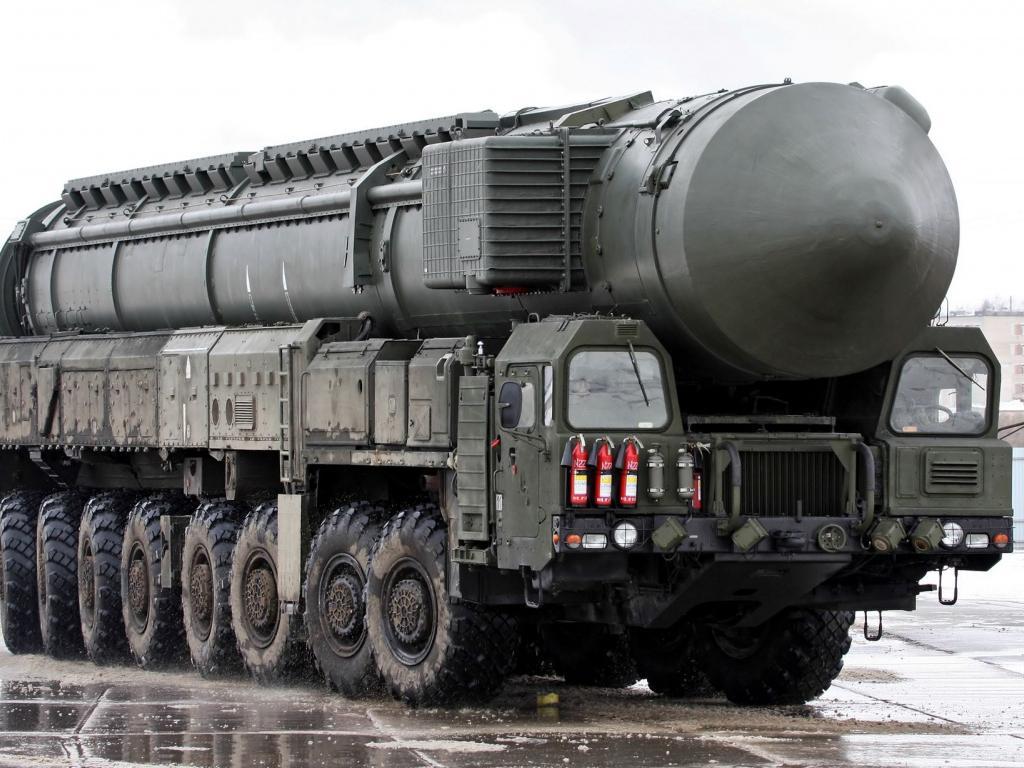Russia to test new generation of intercontinental missile that can 'beat US defence systems'
Russia claims new Sarmat missile will have 11,000km range, and payload of up to 15 warheads

Your support helps us to tell the story
From reproductive rights to climate change to Big Tech, The Independent is on the ground when the story is developing. Whether it's investigating the financials of Elon Musk's pro-Trump PAC or producing our latest documentary, 'The A Word', which shines a light on the American women fighting for reproductive rights, we know how important it is to parse out the facts from the messaging.
At such a critical moment in US history, we need reporters on the ground. Your donation allows us to keep sending journalists to speak to both sides of the story.
The Independent is trusted by Americans across the entire political spectrum. And unlike many other quality news outlets, we choose not to lock Americans out of our reporting and analysis with paywalls. We believe quality journalism should be available to everyone, paid for by those who can afford it.
Your support makes all the difference.Russia is preparing to test-launch its new generation of nuclear-armed intercontinental ballistic missile (ICBM), which it has claimed will be able to penetrate the US’ defensive shield.
Delayed several times, the tests of the RS-28’s launch and first few seconds of flight are to be carried out at the Plesetsk Cosmodrome, in Russia’s north-west, before the end of the year.
The trials had been postponed because launch silos and the projectiles themselves were not ready, according to the state-controlled Sputnik website, which cited the Kommersant newspaper.
The RS-28 Sarmat, a 100-plus-ton ICBM that government-controlled media has claimed could destroy an area the size of Texas, is designed to evade missile defences with multiple hypersonic warheads, known as MIRVs.
Talking up its capabilities, state-linked Russian sites have claimed an 11,000km range, a payload of up to 15 warheads and the ability to “speed past every missile defence system in existence”.
RIA Novosti said individual warheads could have yields up to 750kt and that RS-28 launch silos would be built to withstand seven nuclear strikes.
Outside sources cast doubt on some of these specifications. RIA said the new missile will have a “throw weight” – the mass of all components minus fuel and the launch rocket – of five tons.
But Michael Kofman, a research scientist from the Centre for Naval Analyses, told The National Interest earlier this year: “If RIA is right, and it probably is not right, how do you fit a payload of 10 warheads and tons of decoys into five tons?
“There are large questions outstanding about conflicting claims about throw-weight, warheads and penetration aids.”
Russia expects the RS-28 to enter service by the beginning of the next decade as part of its ongoing nuclear modernisation.
Reports of the planned tests emerged after US President Donald Trump called for “total rehabilitation” of America’s nuclear forces.
He had denied reports he was seeking a 10-fold increase in the US’ arsenal, saying instead he wanted “modernisation”.
In 2010 the US and Russia signed the New START treaty, which mandated a significant reduction in deployed strategic nuclear weapons.
The US military said it carried out a successful test of its ground-based missile interception system, called THAAD, earlier this year amid growing tension with North Korea. It also test-launched an unarmed Cold War-era Minuteman III ICBM from Vandenberg Air Force Base in California.
Pyongyang has claimed it now possesses ballistic missiles capable of targeting the US mainland.
Join our commenting forum
Join thought-provoking conversations, follow other Independent readers and see their replies
Comments